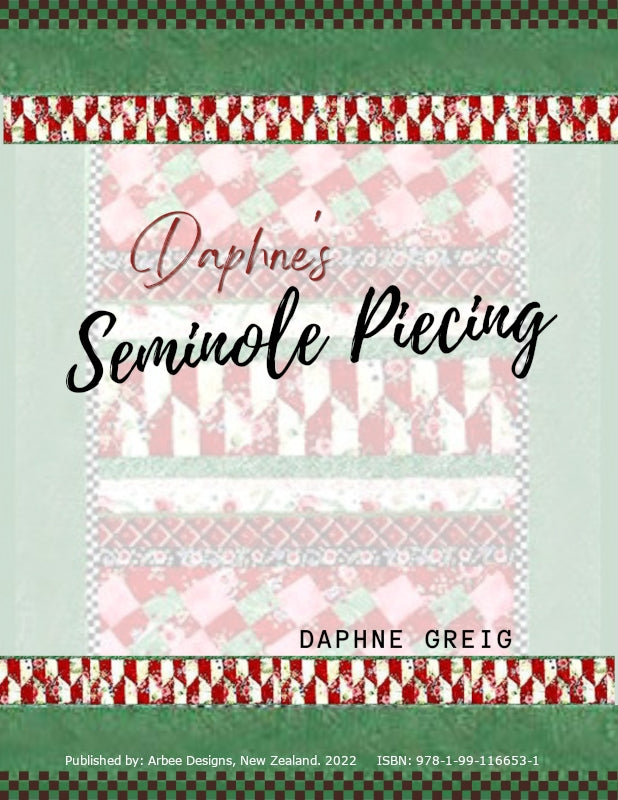
- Description
- Requirements
Seminole Piecing is a patchwork method used by the Seminole people of south Florida to enhance their garments. Daphne will show you how to create eight bands of Seminole patchwork using simple rotary cutting and basic piecing techniques. The magic comes when you cut the units apart and sew them back together.
Learn to use angles on your rulers for Patchwork and then apply Seminole bands to tote, bolster pillow, and wall quilt. You will be inspired by her suggestions to use the bands to trim garments and home décor items as well.
Level: Advanced beginner and up.
OUTLINE
Part One
- Brief look at history of Seminole Patchwork
- Consider some uses
- Talk about fabric and thread selection
- Importance of accurate cutting, sewing and pressing
- Make three bands
- Checkerboard
- Simple Stair Step
- Tipsy 4-patch
Part Two
- Make Tote bag with Tipsy 4-Patch from Part One
- Make three new bands
- Border 9-Patch
- Chevron Band
- Double Checkers
Part Three
- Make two new bands
- the Diamond Diagonal
- the Shaded Arrows
- Arrange some strips to form a bolster
- Sew remaining strips to create a wall quilt
In this ebook, you will learn how to create bands of patchwork. You will use rotary cutting, strip piecing, and resewing to create the patchwork. Finally, you will be inspired to use your creations to make three items: a tote bag, a bolster pillow, and a wall quilt. Other ideas for using the bands will also be presented.
SUPPLIES
- sewing machine
- 1/4" patchwork foot is STRONGLY recommended
- rotary cutter - use a new sharp blade
- rotary cutting mat - minimum size required is 24" x 36"
- iron
- rulers -
- 6" x 24" with 45º angle marked clearly on the ruler
- you may want to use a 6" x 12" ruler as well
- fabric markers - choose ones that will show on both light and dark fabric. I often use Roxanne's pencil for light fabrics and the Clover Chaco Liner for dark fabrics
- pins - I recommend glass head silk pins - very fine and sharp
- seam ripper
- thread snips or small scissors for clipping threads
- piecing thread - neutral colour such as medium gray
- leftover batting scraps to stuff your bolster
Fabric will be discussed in first section. You will be able to use fabrics from your stash for your assignments.
- Choosing a selection results in a full page refresh.
- Opens in a new window.

